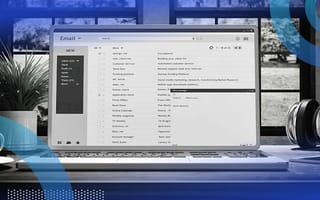One of the biggest challenges I’ve noticed with early stage startups is building the strategy necessary to find the right customers to drive long-term growth. To craft such a strategy, you need to understand the lifecycle of email marketing and how it plays its part in generating quality leads and eventually converting them into sales. More than 60 percent of businesses rely on email marketing as their primary customer acquisition channel.
Email marketing is one of the most lucrative marketing channels that, if used effectively, can help early stage startups overcome the challenge of fostering long-term growth.
Before you start setting up your email marketing lifecycle strategy, you’ll need to understand the basics of what it is and how it can impact your business. Lifecycle email marketing is a series of touchpoints your business uses to attract customers, educate them about your business, nurture them as leads and eventually convert them into sales.
In any business, sales exist in both pre- and post-sale stages. Pre-sale involves the process or activities that take place before the customer makes a purchase. For example, generating email sign-ups during the pre-launch of your startup is a pre-sale activity. Post-sale is the process you perform after a customer has made a purchase, like sending a follow-up email to see how satisfied they are with the product or service.
For a new startup, creating your lifecycle email marketing strategy is crucial since it has the power to attract, retain and create long term brand advocates that will help grow your business. Each stage of the lifecycle should target the specific needs of your audience in their buying journey. Let’s dive into how to navigate the different stages in a lifecycle email marketing strategy.
3 Stages of an Email Marketing Lifecycle
- Awareness stage.
- Nurturing stage.
- Engagement stage.
Awareness Stage: Collecting Emails
Once you’ve established your startup, it’s time to work on attracting your targeted customers and generating those new email signups. This stage is at the top of the sales funnel, and you want to get your customers’ attention with highly shareable and brand-focused content like blog articles and promotions you’re currently running.
View this as the perfect time to collect zero-party data, meaning any data that customers are willing to share with your business to enhance their experience. Using such data in your email campaigns means you’re providing them with relevant content that they asked to receive.
For example, a customer may want to receive emails about new launches, promotions and recommendations. If you know that, going forward, you can include this customer on any emails that feature such material.
Depending on the development stage of the startup, there are two approaches here.
Before Launch
Creating a pre-launch mailing list will help build excitement. This approach will generate a list of interested leads that can be converted into paying customers in the future. Create a dedicated landing page with details about the product or service you’re launching and include a section where interested leads can leave their email to receive more information or access to the beta before launch.
You can also entice signups by offering a special perk to help boost registrations. For instance, you might decide that the first 1,000 email signups will receive a special discount at launch.
Collecting emails before your launch tells you who’s interested in your company and generates buzz.
After Launch
During this stage, the key is to attract as many targeted customers to your business as possible. Create a strong brand presence on various channels where customers can find your business.
Generate new email signups by creating a popup on your website with an attractive incentive, featuring a sticky bar to encourage joining your newsletter and encouraging email sign up during check out or on social media.
Nurturing Stage: Share High-Value Email Content
At this stage, you’ve captured the interest of your targeted audience but need to turn them into paying customers. You’ll want to keep your prospects highly engaged by providing valuable content in your nurturing email campaign. A nurturing campaign involves building brand recognition through timely set emails that share the value of your products or service and motivate customers to take action on your business.
Nurturing campaigns are based on the needs and behaviors of your customers. At this stage, you can use first party data like their behavior on the website or interactions you’ve had with them via emails. You should create various email interactions to further educate them on your business with relevant content that can help move them further along on their buyer’s journey.
Lead nurturing emails get four to 10 times the response rate of standalone email blasts. You can build this campaign through an automated workflow that will send emails to nurture your leads until they’re ready to commit to a purchase.
Engagement Stage: Building Long-Term Relationships
Congratulations, you’ve turned your lead to a first-time buyer! The next step is to focus on building a long-term relationship with your new customers. Selling to a customer you’ve already acquired has a success rate of 60-70 percent, whereas the success rate of selling to a new customer is 5-20 percent. By taking time to provide an exceptional follow-up experience after the first purchase, you can continue engaging with these folks and increase profits.
Follow-up emails can include a quick review of a recent purchase or share recommended products to upsell based on purchases/searches. This engagement will create a personalized experience for your customers that will help build brand loyalty and allow you to get to know your customers even better.
Personalization can truly bring your relationship with customers to the next level. It’s a powerful tool that can speak to your customers with customized content that is relevant to their needs. You can easily use existing data you’ve collected from your customers’ activity with your business or ask them to share their preferences to provide higher-value content that will build stronger relationships with them.
Now that you understand the possibilities of the lifecycle of email marketing at each stage, it’s time to create that first encounter with your targeted audience, guide them on their buying journey and turn them into brand loyalists. Keep in mind that this process will take a bit of time but the payoff is worth it in the long run for your business.








